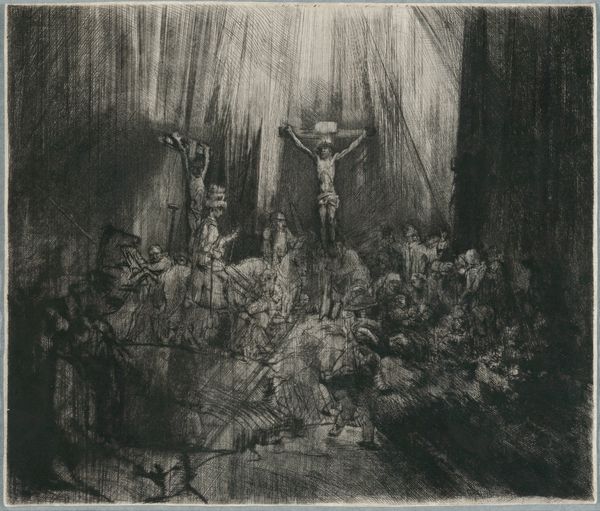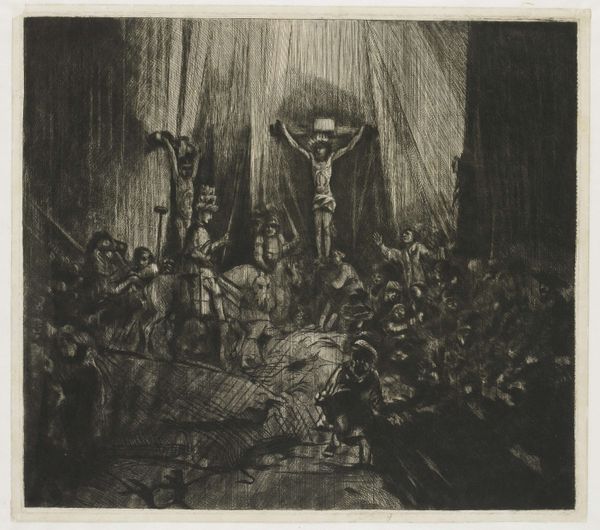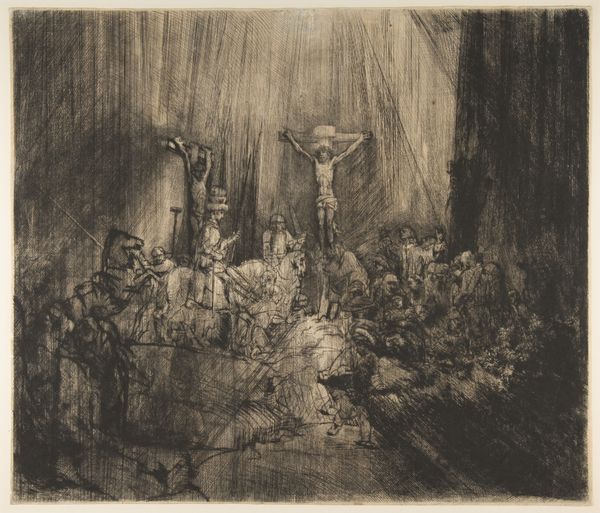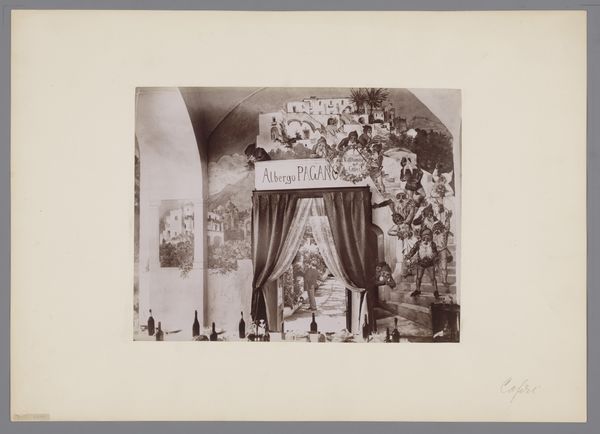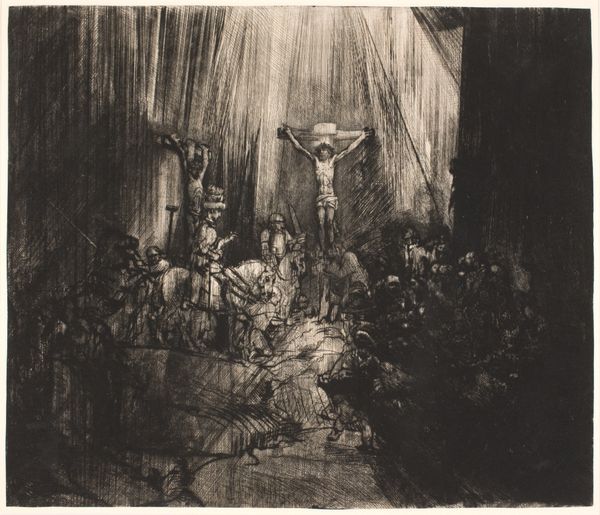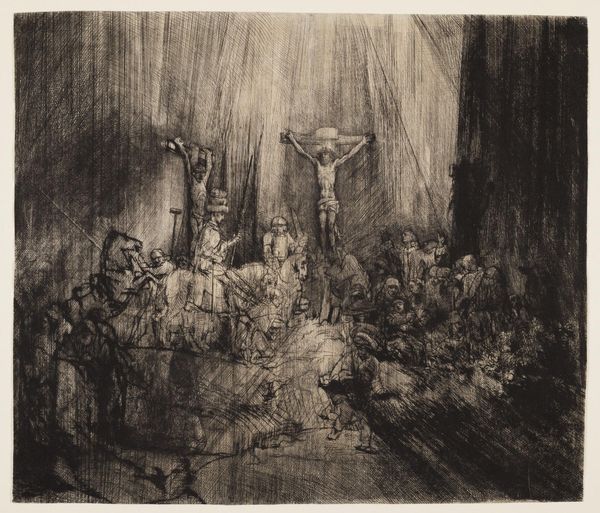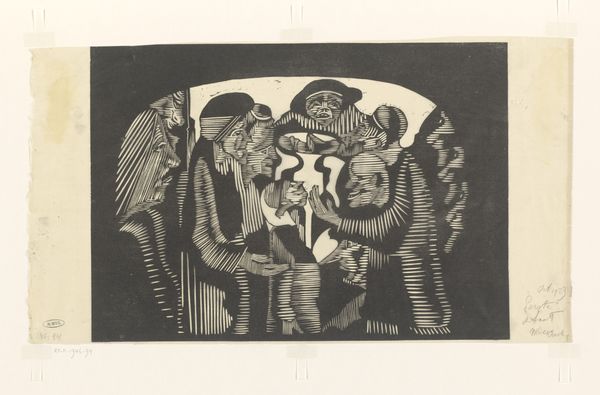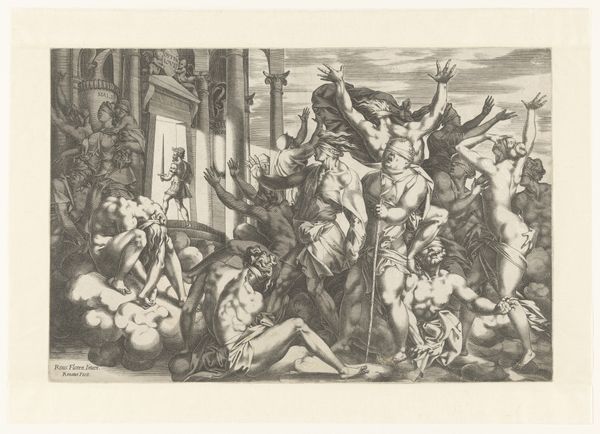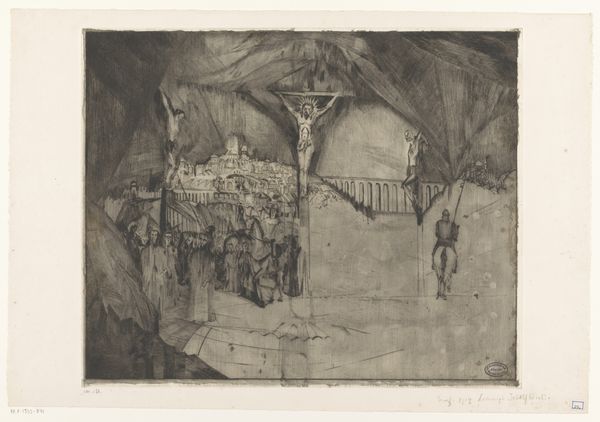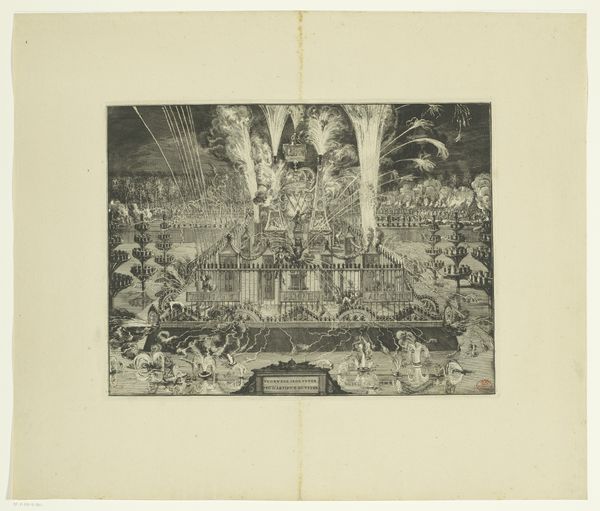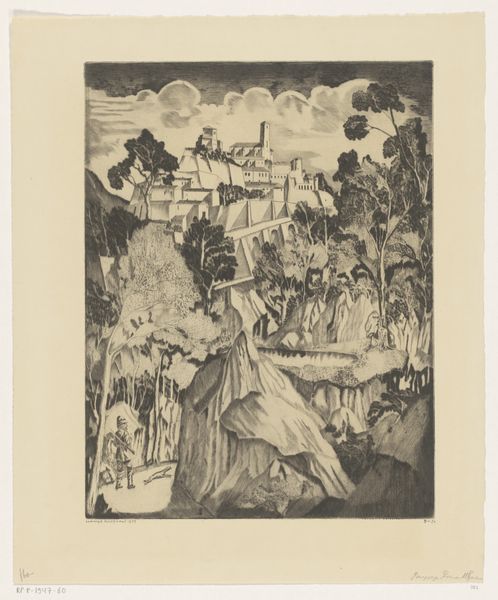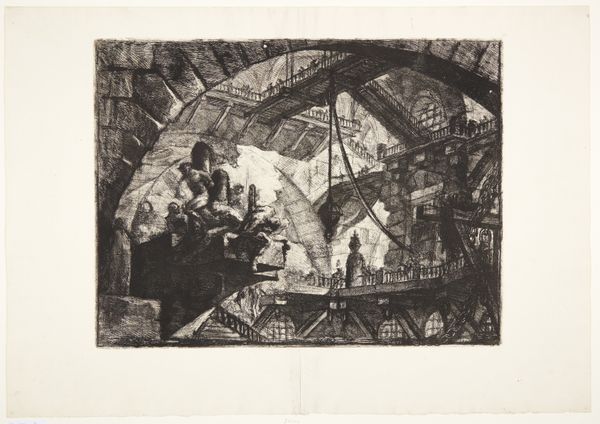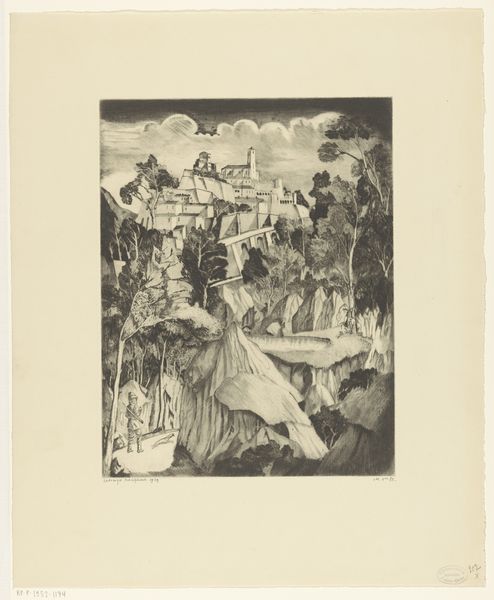
print, etching
#
narrative-art
# print
#
etching
#
figuration
#
expressionism
#
history-painting
Dimensions: height 495 mm, width 637 mm
Copyright: Rijks Museum: Open Domain
Curator: Lodewijk Schelfhout's "Golgotha II," created in 1918, depicts a harrowing scene of the crucifixion. The etching, housed here at the Rijksmuseum, pulls the viewer directly into the emotional heart of this historical moment. Editor: My first impression is the sheer density and weight of the composition. The blacks are so rich, it almost feels like I can touch the collective sorrow of the crowd. Curator: Indeed. Look at how the light dramatically strikes the figure on the cross, sharply contrasting against the shadowy chaos of the crowd below. That strong vertical emphasis, combined with radiating lines, powerfully draws the eye upward. Semiotically, the light underscores Christ's role as the sole figure of hope. Editor: And it's such a well-worn visual trope. Think of countless Renaissance paintings, employing similar tactics. Yet, Schelfhout somehow makes it fresh. I am especially drawn to the depiction of the crowd—their faces obscured, a mass of shadowed forms conveying a profound sense of collective guilt. Curator: It's tempting to view those obscurations purely in psychological terms, and one cannot ignore that potential. The crowd symbolizes humanity in the raw, implicated in this primal act of injustice, their expressions buried under the weight of history. The city on the horizon feels removed, idealized almost, in stark contrast with what we see upfront. Editor: I'd like to think of the urban landscape in the distance to represent both order and also to indict institutions and state sanction, while its removal to the rear amplifies the individual’s abandonment. This etching technique reinforces themes of emotional turbulence with raw textures. The figure looks like light bursting through darkness. Curator: I appreciate how the artist utilized light in a symbolic fashion, and I concur the artist intended the work to serve the overall them of the loss of divine intercession or absence of an afterlife, it provides an interesting formal contradiction by bringing light onto the foreground subject while also showing the rest of the world to be dark, almost hidden away. Editor: Ultimately, for me, "Golgotha II" reminds us of the human propensity for both cruelty and redemption—a stark mirror reflecting our shared past. Curator: Yes, this intense piece demonstrates an expert control of light and shadow to show suffering and hope that lingers with us long after the viewing.
Comments
No comments
Be the first to comment and join the conversation on the ultimate creative platform.
